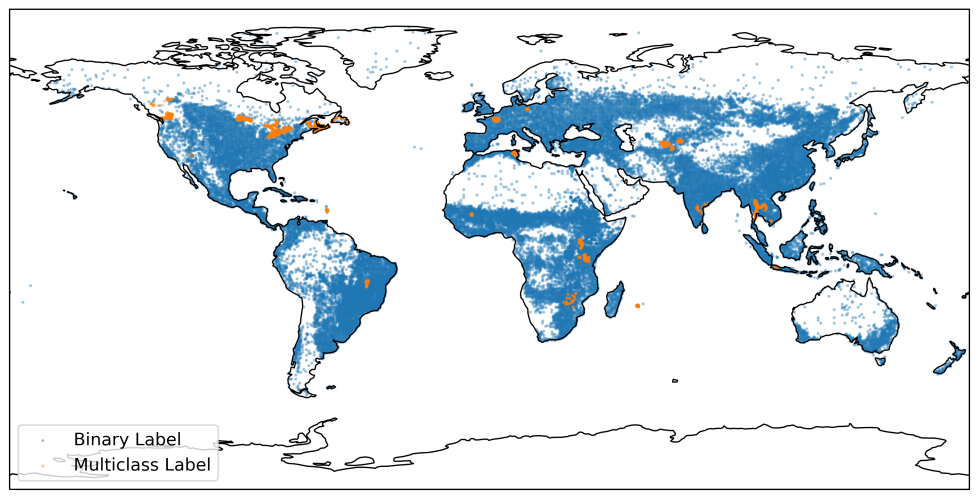Open Sustainability Principles
Contents
Open Sustainability Principles#
Openness is a key indicator of sustainability. It allows different disciplines, organisations and societies to refine their understanding of sustainability systematically and respond to new information effectively. This basic idea of iterative innovation is often associated with the metaphor “standing on the shoulders of giants”, coined by Issac Newton,1 which means to build on previous discoveries. By making one’s intentions and conclusions transparent and accessible, knowledge can continue to accumulate and be refined over time. It is the integrity and accessibility of information and knowledge that makes “openness” integral to long-term sustainability. Openness provides the basis for collaborative sense-making, enables meaningful consensus – based on an accurate, shared understanding of the state of our planet – provides direction on how to best coordinate our choice-making, and builds capacity for effective action.

Fig. 8 - The progressing of science and knowledge is phrased with the metaphor “standing on the shoulders of giants”. The giant represents information and knowledge – accumulated and scrutinised over many years – that enables the person on its shoulder to see further than what would otherwise be possible. Blind Orion Searching for the Rising Sun by Nicolas Poussin, 1658.  #
#
The cross-domain quantitative analyses, discussions, and research in this study have made it possible to identify the following guiding principles, referred to as Open Sustainability Principles:
Transparency and Trust#
Understanding how human actions affect the environment, and which practices and technologies protect natural resources in the long term, is essential for a sustainable economy. Many solutions are complex, and it is not always obvious whether they will be economically viable, socially inclusive, and environmentally sustainable. How can solar cell recycling be done economically? Can carbon capture and storage be a scalable and viable mitigation strategy to decrease carbon dioxide in the atmosphere? Is land used for biofuel crops competing with food production, and what is its effect on biodiversity? Open datasets, models, and access can be critical for transparency and trust in the search for answers to these questions.
Open source approaches also allow for public scrutiny and independent auditing. The ever-increasing resolution of satellite data means that the environmental impact of state and non-state actors can be measured with high granularity. Open data and models create transparent metrics and more comprehensive sustainability impact assessments. For example, open datasets track the locations and companies involved in cement production, iron and steel production, and global coal, oil, and gas supply chains. The platform Carbon Mapper puts pressure on industry by disclosing methane and carbon dioxide sources. Through satellite imagery, impacts on the natural environment such as greenhouse gas emissions, land use change, biodiversity loss, soil drought, or water pollution can be measured with high temporal and spatial resolution. A variety of forest health indicators can be derived from this data, like deforestation risk, wildfire risk, biodiversity or tree detection. The use and improvement of these methods provide independent evidence that habitats are being lost and will ultimately help in the fight to protect these ecosystems.
Traceable Decision-Making#
Open source approaches create a common understanding of what is required to deploy various solutions and scientifically assess their environmental impact. With more accurate information, efforts can be focused on the highest-leverage solutions. Open science discloses the assumptions behind these models and measurements and reduces uncertainties in the long term through continuous improvement and observation. Demanding transparency at each stage of the decision-making process (modelling, forecasting, impact assessment) will help reduce greenwashing and ensure that the environmental impacts of both state and non-state actors are verifiable and traceable.
Open source tools enable meaningful comparisons that guide decision-making. Earth system models, integrated-assessment models, and macro-energy models play a central role in forming plausible scenarios, informing science-based targets and guiding policy development. Satellites and remote sensing tools allow for the observation and validation of such models, helping to refine prior assumptions. Economy-wide tools such as life-cycle assessment and input-output analysis provide methods for accurately estimating the environmental impact associated with a region, sector, product, process, or service. Some systems require real-time optimisation with respect to the consumption of resources. At the sectoral level, platforms like Electricity Maps monitors and predicts the carbon intensity of electrical grids worldwide on an hourly basis. This information is used to shift energy consumption to times when there is a high share of renewable energy sources in the electricity grid, thereby reducing emissions. In the IT industry, developers and businesses use tools like Scaphandre, Cloud Carbon Footprint, and Kube Green to monitor energy consumption, estimate carbon emissions, and inform decisions about the optimal use of cloud infrastructure. Other tools are essential in the research and development of new technologies, and in evaluating current and future performance. Tools such as pvlib provide open libraries for simulating the performance of photovoltaic (PV) energy systems. This, in turn, helps to determine the future value of PV generation projects and shapes the financial and investment risk profile of PV projects.

Fig. 9 - The the openmod manifesto illustrates how traceable decition making is possible in the decarbonization of the energy sector. The openness of data, models and dicussions enables traceable knowledge creation for science and society. License: CC 4.0#
Collaborative Innovation#
Open innovation strategies accelerate collaborative cultures. This translates into significant economic and commercial advantages: the identification of new business opportunities, increased flexibility in developed solutions, enhanced economic diversity and complexity, and the motivation of a broader community to develop an ongoing stream of innovations.2 One example is the open online marketplace for local food, Open Food Network. It enables a network of independent online food stores by connecting farmers and food hubs with individuals and local businesses, thus giving them an easier and fairer way to distribute food.
Open source approaches also mean each problem only has to be solved once. Frequently, multiple actors invest in open data products, algorithms, and software – leading to duplication, incoherent outcomes, and inefficient use of resources. Through open collaboration, OSS can mitigate inefficiencies in resource allocation and allow for the emergence of order through a decentralised, loosely coordinated approach. For example, rather than developing yet another local bike-sharing system, the team behind Citybikes provides an open bike-sharing back-end to third-party developers and researchers. Citybikes is built on pybikes and currently supports over 400 cities. The Citybikes API is the most widely used dataset for building bike-sharing transportation projects.
OSS also standardised the practice of collaboration between software contributors. This distributes the benefits of cooperative software development for common standards and higher code quality. For example, the Mobility Data Specification is a standard that enables right-of-way regulation and two-way communication between mobility companies and local governments. Open interfaces and open architecture make it possible to divide the complexity into different modules, which greatly facilitates cooperation between different developments and organisations.
Over the past decade, multiple companies have demonstrated that open businesses can also grow and be financially sustainable. A 2021 study on the economic impact of open source software and hardware concluded that open source technologies injected €65-95 billion into the European economy. Open source significantly boosted small and mid-size enterprises, Europe’s most important horizontal economic stakeholders. Growth was reflected in the increased creation of technology startups at more than 650 per year. Commercial open source has seen a massive upswing in the last year with its own conferences, business models, strategies and venture capital funds like OSSC or Open Core Ventures. These developments have already shown a new, open mindset is driving a systematic shift away from classic proprietary business models — the same mindset can be applied to open sustainable technologies.
Localisation and Decentralisation#
Wealthier economies with greater technological capacity can enable developing countries to adapt more quickly to climate change by openly licensing technologies. Open source-based participation and collaboration contribute significantly to the global circulation of knowledge about sustainable development. In addition, by sharing information and enabling technologies, under-resourced communities can rapidly build local interdisciplinary capacity, accelerating both digital and sustainability transformations. This is especially important for place-based innovations in mobility, food, and housing. For example, open agriculture can be adopted by farmers to decrease the environmental impact of their farming techniques. Practices like these enable faster global change that is responsive to local conditions and cultural needs.
Countries must also be supported to rapidly deploy and adapt open source technologies to meet their infrastructure needs. This has the potential to enhance economic complexity, provide job growth, and drive resource and efficiency gains. For example, open source organisations such as NASA Harvest use measurements and forecasts to improve food security and agriculture worldwide. By open-sourcing the data, models, and software tools, the derived knowledge and insights are easily accessible, adaptable, and actionable within the local context. This is critical to building resilience, social equality, and strengthing local economies. The alternative, pursuing external proprietary options, may not be appropriate at the speed and scale required. OSS, on the other hand, can lay a digital foundation based on solutions that are more easily integrated, interoperable, and maintainable. The same applies to open source hardware solutions, which are increasingly important in accelerating decarbonisation efforts in the Global South.

Fig. 10 - CropHarvest is an open source remote sensing dataset for agriculture with benchmarks. It collects data from a variety of agricultural land use datasets and remote sensing products. License: CC-BY-4.0#
